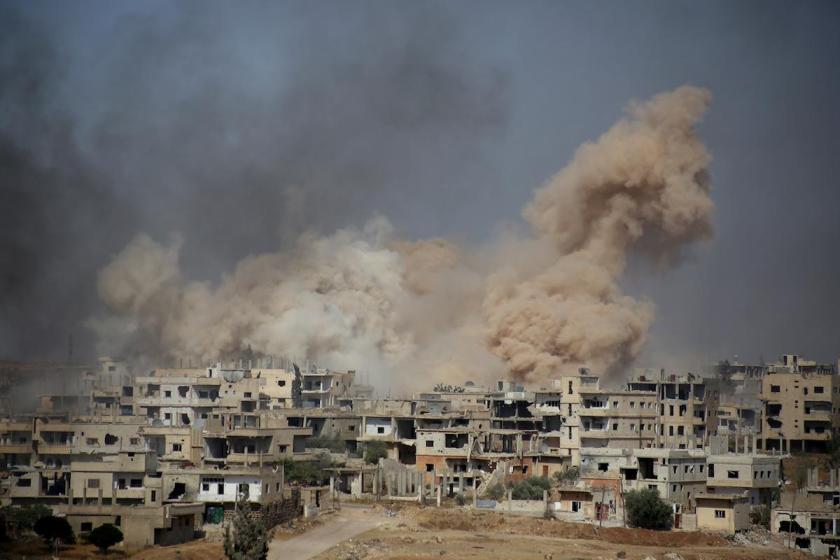By Javier Sethness

The latest news from southern Syria is that Assad Regime forces, backed by heavy Russian aerial bombardment, Iranian artillery strikes, and allied paramilitary infantry, have fully retaken the revolutionary city of Der’aa near the southwestern border with Jordan. This is the very “birthplace” of the Syrian Revolution, as it was in this city in March 2011 that 15-year old Mouawiya Syasneh and his comrades, expressing their youthful sympathies for the ongoing Arab Revolts—which by that time had toppled Zine al-Abidine bin Ali and Hosni Mubarak—wrote graffiti on a wall in southern Der’aa, proclaiming in Arabic, “Your turn, Doctor,”[1] “Freedom” (حرية), and “The People Want the Fall of the Regime” (الشعب يريد السقوط النظام).
The indignation felt at the regime’s callous threat to disappear fifteen teenage boys accused of collectively authoring such seditious messages was the spark for the Syrian Revolution against Bashar al-Assad and the Ba’ath Party. As of mid-June 2018, Syasneh was still alive and fighting the Regime, following his taking up of arms, presumably with the Free Syria Army’s (FSA) Southern Front, in 2013. At that time, he declared that his “opinion of the revolution ha[d]n’t changed. For us, the revolution continues,” whereas his comrade Samer Syasneh recalled that, “In the beginning, I was proud of being the reason for the revolution against oppression. But with all the killing, the displacement and the homelessness over the years, sometimes I feel guilty.”
There is no lack of evidence of destruction in Syria. Since March 2011, armed conflict in Syria has caused 3 million homes to be razed, with the Regime accused of responsibility for 90 percent of this destruction. More than half a million Syrians have been killed, including 200,000 civilians, and the Assad-Putin-Iran axis has been found responsible for more than 90 percent of these civilian deaths. More than half the country’s population, or about 12 million people, have been displaced either internally or across international borders—though in the face of a resurgent chauvinism both in Europe and the United States, as in countries neighboring Syria, increasingly more refugees are being forced to return, in violation of international law, despite the immense risks. The fate of Der’aa, bombed into submission by Russia, Iran, and the Regime and thus violently reintegrated into the Ba’athist State, resembles that of Darayya, Eastern Aleppo, and Eastern Ghouta, other rebel-held territories that have fallen in the recent months and years, after having been subjected to devastating scorched-earth tactics.
An estimated 350,000 Syrians fled the Regime’s offensive against the Der’aa governorate which began on June 12, being so forced to enter the desert and request asylum from neighboring Jordan and Israel, both of which cruelly maintained their borders closed, notwithstanding the plea by the United Nations’ special envoy for Syria that 750,000 lives were at risk. Several displaced children have been reported as dying already due to thirst, scorpion bites, and exposure, and the Regime has repeatedly bombed field hospitals for the displaced. At least two hundred civilians died in Regime and axis attacks on the city. Many of those displaced lacked rudimentary shelter against the desert heat and winds, with little to no food. Meanwhile, the Jordanian government shamelessly has refused entry to these would-be refugees, and even clarified that it would provide material aid to these “enemies of the State” only insofar as Assad would permit this. Indeed, in a telling manifestation of capitalism’s basis in accumulation by dispossession, both Jordan and the Syrian Regime have celebrated Assad’s capture of the Nasib-Jaber border crossing from FSA control, anticipating a reactivation of exploitation and extraction within the free-trade zone that had existed there until the Revolution. Nevertheless, the Jordanian people have mobilized in a spirit of mutual aid to support those fleeing Assad and Putin’s war machine.
Continue reading “The Fall of Der’aa: Assad’s Counter-Revolution Triumphant”

